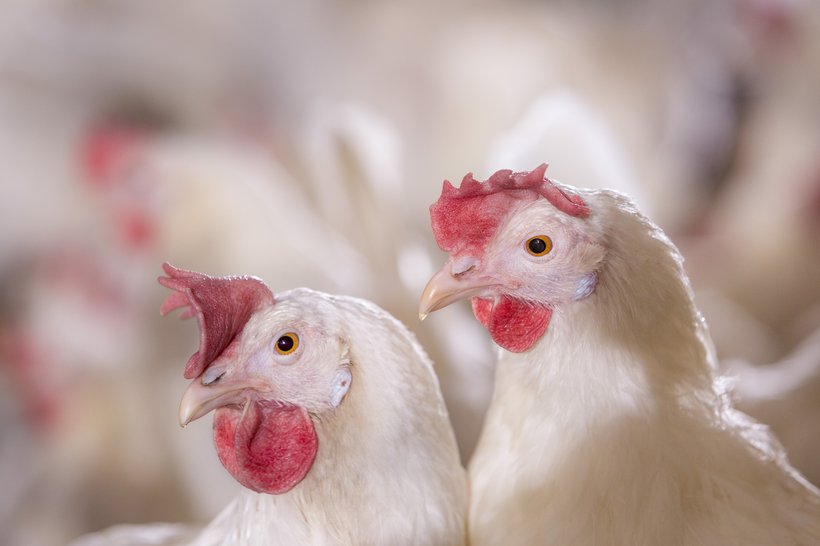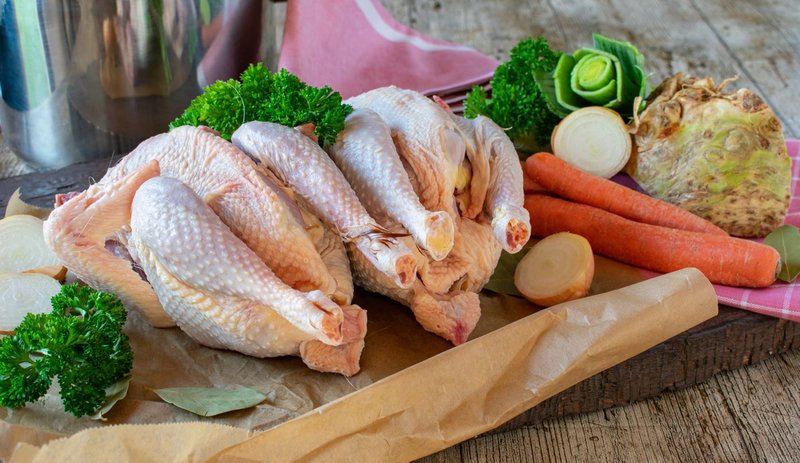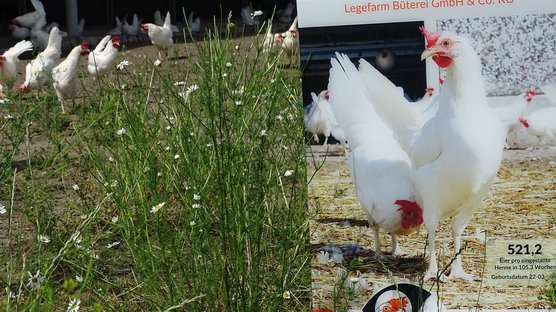
Published on Aug. 30, 2023
"Laying Hen Management: End-of-Cycle Considerations"
The presence of eggs in many countries population's diets is steadily growing, ensuring that there are at least 365 opportunities each year to enjoy this nutritious food at our tables
A multitude of factors contribute to this rise in egg consumption:
- Consistent Consumption: Eggs are becoming a staple in diets due to their reliability as a nutritional source.
- Healthy Lifestyle: Physical activity paired with balanced diets underscores the importance of incorporating eggs.
- Nutritional Awareness: The dissemination of the myriad benefits of eggs has amplified their significance in daily nutrition.
For centuries, laying hens have been selected to provide sustenance for humanity. Their significance goes beyond merely supplying food:
- High Nutritional Value: These remarkable creatures convert simple feed into highly biologically valuable food.
- Natural Preservation: Eggs can be stored without refrigeration, thanks to their protective shells.
- Versatile Utilization: They serve purposes beyond sustenance, including medicinal and artistic applications.
- Space Efficiency: Requiring minimal space, they surpass many other livestock options.
- Civilization Companions: Their adaptability and manageability have allowed them to accompany civilizations through history.
- Frequent Production: Laying hens provide a consistent supply of eggs.
- Duality of Use: While not typically consumed directly, they can become meat when needed.
- Cultural Neutrality: Not tied to religious dietary restrictions, they offer inclusivity.
- Agricultural Support: Their manure enriches soil for subsistence farming.
- Natural Pest Control: Laying hens aid in curbing pest populations, such as cockroaches, scorpions, and spiders.
- Habitat Flexibility: They can thrive in areas unsuitable for traditional agriculture.
Broadening their roles beyond farms extends the benefits of these noble animals to a wider audience. Addressing the growing demand for eggs involves three strategies:
- Scaling up the number of Laying Hens: Increasing the number of laying hens by expanding flocks and housing.
- Enhancing Productivity: Genetic advancements, supported by nutrition, health, environment, and management improvements, boost flock productivity.
- Curbing Losses: Reducing mortality rates and the presence of second-quality eggs minimizes losses and waste.
Conversely, the decision to conclude a laying hen's production cycle may be driven by:
- Housing Transition: Necessity to prepare the facility for arrival of a new batch of pullets.
- Profitability Decline: When daily production costs overshadow profitability (refer to Table 1).
- Performance Issues: Decline in production, recurring medication requirements, compromised egg quality, and high mortality rates.
These factors may prompt adjustments in flock management and replacement scheduling.
It's essential to perceive laying hens not just as farm assets but as versatile contributors to various aspects of human life. Expanding our thinking beyond the confines of traditional farming ensures that these remarkable creatures continue to enrich our lives in numerous ways.
Table 1. Relationship between productivity (%) and feed conversion (kg feed / 360 egg box)
| daily production % | 95% | 90% | 85% | 80% | 75% | 70% | 65% |
|---|---|---|---|---|---|---|---|
| Layers to produce a 360 egg box | 379 | 400 | 424 | 450 | 480 | 515 | 554 |
| Kg of feed per box of 360 eggs | |||||||
|
Estimated Daily feed intake 110 g / hen |
41,7 | 44,0 | 46,6 | 49,5 | 52,8 | 56,7 | 60,9 |
For every 01 million people, every additional egg per capita in consumption translates to a daily demand surge of approximately 2.740 eggs. This, in turn, calls for the presence of roughly 3.425 more laying hens in active production. (This calculation assumes an average flock productivity of 80%, encompassing both egg production and utilization.) As the production cycle advances, a pivotal juncture emerges when these avian contributors must be transitioned out to make room for a fresh contingent of pullets.
Moreover, two decades ago, it was customary to conclude a flock's production phase at approximately 70-75 weeks of age. Presently, advancements in poultry genetics and flock management have extended this cycle, allowing flocks to thrive for 90-100 weeks without the necessity of forced molting. Leveraging heightened flock productivity, producers have streamlined their operations by reducing the number of flocks from 17-18 to 11-12 over a 20-year production span. This remarkable evolution equates to nearly a third reduction in pullet housing demands, optimizing production house occupancy.
This augmentation in laying persistence, coupled with diminished mortality rates, has empowered flocks to achieve the impressive milestone of producing 500 eggs or more at the 100-week mark, both within Brazil and beyond its borders. This, in turn, augments the overall efficiency of production house utilization. Unproductive flocks, in contrast, contribute to prolonged periods of production house inactivity, necessitating their earlier sale and subsequent wait for a fresh batch of pullets to arrive. Thus, flocks that exhibit heightened productivity effectively mitigate the imperative for frequent flock replacements, as encapsulated in Table 2. This multifaceted approach not only caters to increased demand but also optimizes the continuity and resource utilization in the production cycle.
Table 2. Effect of flock length in production on the number of flocks housed in a 20-year house (1,040 weeks)
| Dynamics |
Weeks in the house |
Flocks | |
|---|---|---|---|
| 110 WOA Flock | Start with 16 WOA, End at 110 WOA | 95 | 11 |
| 105 WOA Flock | Start with 16 WOA, End at 105 WOA | 90 | 11 |
|
100 WOA Flock |
Start with 16 WOA, End at 100 WOA |
85 | 12 |
|
95 WOA Flock |
Start with 16 WOA, End at 95 WOA |
80 | 12 |
|
90 WOA Flock |
Start with 16 WOA, End at 90 WOA |
75 | 13 |
| 85 WOA Flock | Start with 16 WOA, End at 85 WOA | 70 | 14 |
| 75 WOA Flock |
Start with 16 WOA, End at 75 WOA |
60 | 17 |
Determining the optimal timing for selling laying hens (depleting a flock) at the culmination of their production cycle hinges on a delicate equilibrium involving production costs, feed conversion, and egg quality. This calculus is further swayed by market demand for eggs and the readiness of replacement flocks. Historically, these hens have primarily found their purpose in human consumption and as feed for animals.
Necessitated by the intricacies of this demand-supply interplay, a recalibration of the supply chain becomes imperative. To this end, we delve into the intricacies and prerequisites concerning the sale of hens upon the closure of their production cycle. This exploration takes place within the broader context of the egg production chain.
The benefits of an organized Housing schedule
Effecting a well-timed and swift transition of hens at the conclusion of their production cycle yields manifold advantages:
- Biosecurity Implementation: Swift removal allows for thorough biosecurity protocols, encompassing cleansing and meticulous preparation of sheds for upcoming flocks. This involves removing left-over feed and waste, upkeeping equipment (cages, house structures, feed and water systems, electrical and mechanical components, air conditioning, lighting), followed by comprehensive structural cleaning, parasite control, and sanitization.
- Pullet Adaptation Window: Adequate time is provided for pullets to adapt to the production environment. Timely introduction to the production house, prior to the onset of laying, grants these birds the opportunity to acclimatize, locate feeders and drinkers, and reestablish social hierarchies. This prelude significantly augments their performance upon the commencement of laying—bolstering initial egg weight, optimizing feed and water consumption, reducing a potential drop in peak laying performance and curbing mortality rates.
- Averting Domino Delays: Avert a domino-like delay effect. Timely house release becomes crucial as it impacts the progression of new pullet batches from the rearing house to the production house. Delays in one stage set off a chain reaction, affecting subsequent flock housing schedules and creating logistical bottlenecks.
- Efficient Flock Management: More productive flocks reduce the need for new flocks as unproductive flocks that have been sold before the programmed age generate idleness in the production sheds.
- Harmonizing Costs and Welfare: Striking equilibrium between production costs, animal welfare, and environmental ramifications is paramount. Prolonged hen cycles reduce the necessity for frequent flock turnover. Notably, the less productive a flock, the greater the feed required to yield a single carton of eggs.
Basically, when we carefully plan how to finish the cycle of laying hens, many good things happen. These include better protection against diseases, helping young hens get used to their new home, making everything work together smoothly, using the hens in the best way, and making sure things are environmentally friendly. This way of doing things has positive effects throughout the process, optimizing resources and outcomes and making the most of what we have and getting better results overall.
The (costly) consequences of delayed flock transfers to the production house
Delayed transfer refers to situations where pullet flocks are already producing eggs in the rearing house or when transferred birds start laying less than 7 days after arriving in the production house. This delay, whether in transfer or the start of laying, can lead to a substantial loss of 5 to 15 eggs per housed hen, even before reaching 30 weeks of age. These losses can escalate and become irrecoverable when health, nutritional, or management issues arise during the production cycle.
When transferring hens that are already producing, a more careful approach is necessary to mitigate potential problems, such as:
- Extended Adaptation Time: The flock might take longer to adjust to their new environment, affecting overall productivity.
- Mortality Risks: The risk of yolk rupture in the abdominal cavity leading to bird loss, potentially requiring medication.
- Egg Yield Reduction: Softer lighting programs and prolonged adaptation periods could lead to fewer eggs during peak laying.
- Lighting and Nutrition Adjustments: Changes to the rearing light and nutritional programs to prevent premature problems.
- Vaccination Tweaks: Adaptations to vaccination programs for newly transferred flocks.
- Lost Eggs: Potential loss (partial or complete) of eggs produced in rearing cages.
The efficacy of sanitary control during breeding, rearing, and production phases heavily influences the risk of encountering health and nutritional issues throughout the laying cycle. These losses, whether short-term or prolonged, might necessitate medication within the flocks. These losses undermine flock profitability on multiple fronts:
- Production Reduction: Diminished egg output leads to fewer eggs gathered and worsened feed conversion.
- Egg Quality Drop: Egg quality deteriorates, heightening the possibility of customer complaints.
- Bird Loss: Increased bird losses lead to downtime in housing and labor.
- Medication Expenses: Expenditures on medication escalate, accompanied by restrictions on egg usage.
Consequently, it is evident that careful and timely flock transfers are pivotal to ensuring optimal production, maintaining egg quality, minimizing losses, and safeguarding overall profitability.
The significance of slaughterhouses
When considering the utilization of laying hens at the culmination of their production cycle, several crucial factors come into play:
- Geographical Considerations: The considerable distances between egg-producing centers pose challenges in moving laying hens across boundaries. Such transportation not only carries health risks but also increases the likelihood of bird losses.
- Supply Regulation: During periods of egg surplus, culling birds serves to balance egg supply. This practice diminishes the necessity for forced molting (where feasible) as a strategy to reduce egg output.
- Strategic Timing: Delaying new flock housing leads to an egg supply reduction in the following 5-6 months, rather than just in the immediate month necessitating supply adjustment.
- Efficient House Emptying: Larger flock sizes demand extended intervals to empty the housing structure, ideally not exceeding one week.
- Impact of Slaughter Capacity: A higher slaughter capacity expedites the house-clearing process, affording more time for vital cleaning, maintenance, disinfection, and sanitary preparation before the next flock arrives. This bolsters the overall sanitary condition of the facility.
- Health Risk Considerations: Despite cultural factors, selling live birds poses heightened health risks for poultry flocks.
- Mitigating Stress: Longer intervals to empty the housing exert greater stress on remaining birds, potentially resulting in productivity and egg quality complications.
- Post-Slaughter Monitoring: Evaluating the physical condition of birds post-slaughter (such as carcass structure, fat distribution, internal organ development, weight) offers valuable insights into the flock's general well-being. This information can guide measures beneficial for the hens that remain on the farm.
- Shifting Preferences: The demand for chicken meat wanes as the availability of outlets selling chicken meat increases and when purchasing choices are driven by economic capacity.
- Generational Preferences: As preferences for chicken meat aren't necessarily inherited by new generations, the demand for chicken meat can diminish if preferences aren't passed on.
- Quality Matters: The demand for chicken meat surges when it's demonstrated that this type of meat stands out in terms of flavor and texture compared to other poultry options.
- Animal Welfare Commitment: Upholding animal welfare standards during the process of sacrificing birds is paramount.
Conclusively, the establishment and effective utilization of poultry processing units hold paramount importance for egg producers. Addressing these multifaceted considerations ensures not only optimal utilization of resources but also the upkeep of sanitary conditions, the integrity of supply chains, and alignment with evolving consumer preferences.
Slaughter houses, or rendering plants?
Once laying hens reach the end of their productive cycle, it's crucial to explore the possibilities with the resulting products. Considerations must be made regarding consumer preferences and the market's demands. While the primary aim is to achieve agility in processing these birds, the goal is also to ensure that the process generates additional income or, at the very least, avoids causing losses for the producer.
Increasing slaughter capacity can be achieved through the development of value-added products that enhance the profitability of this phase within the production chain. This endeavor aligns with concerns surrounding animal welfare, sustainability, and economic implications. The following avenues offer potential in this regard:
- Minimally Processed Options: Introducing minimally processed food that can compete with broilers in the market. These products are recognized for their unique attributes of texture, flavor, appearance, and price.
- Sausage and Related Production: Utilizing the hens to produce sausages and similar items, where the firmer texture of mature meat is no longer a limiting factor in consumer preference.
- By-Product Generation: Creating by-products suitable for animal feed, thereby circumventing the utilization of these by-products in the layers' diet to avoid any association with "cannibalism."
- Fertilizer and Environmental Integration: Transforming the remains into components for other manures, ultimately becoming valuable fertilizer for agricultural use.
Certain characteristics are pivotal for catering to emerging markets:
- Non-Refrigeration Requirements: Products that can be transported and stored without needing a cold chain, offering convenience and accessibility.
- Flexible Packaging: Products that can be both fragmented into smaller packages and presented in larger quantities, catering to diverse consumer needs.
- Stability and Safety: Products that exhibit physicochemical stability and adhere to rigorous food safety standards, ensuring consumer confidence.
In navigating these avenues, it's essential to strike a balance between economic viability, ethical considerations, and environmental responsibility. The evolution of these options not only addresses waste management but also offers the prospect of a diversified income stream and an enhanced reputation within the poultry industry.
Develop products and forge partnerships to enhance the viability of the partnerships
What alternative avenues can we explore? What latent demands can we uncover? How can we generate new demands? How might we innovate with disruptive products? What could pique the interest of potential investors? How can we expand our portfolio? How can we raise consumer awareness of our brand?
- Nutritional Solutions: Craft new foods that combat under-nutrition and address human food insecurity.
- Human Consumption: Innovate ready or semi-prepared meals, snacks, and similar products for human nutrition.
- Companionship Market: Develop products, including snacks, for companion animals like dogs and cats, besides pet food.
- Wildlife Care: Create items suitable for feeding captive wild animals.
- Industrial Applications: Extract and purify substances with potential for the chemical or pharmaceutical industries.
- Eco-Friendly Initiatives: Explore the use of animal fat for biodiesel production.
- Market Targeting: Identify specific products or parts of poultry that hold value for international importing markets.
Developing new products requires ingenuity, trial and error, and a learning curve. The key is crafting offerings that resonate with consumers, fulfilling their needs, surpassing expectations, and fostering brand loyalty. Initially, the capacity to learn is paramount in refining the product's features, type, presentation, positioning, benefits, and pricing. Once a core product is established, expansion into derivative or varied versions can be explored. Precise consumer market research is pivotal for accurate consumer engagement. The involvement of egg producers is pivotal during this developmental stage. Collaborative ventures and cooperatives can yield mutually beneficial outcomes and alleviate individual pressures. Patience is crucial; these initiatives don't flourish overnight. Venturing into new realms should not detract from the primary focus of the farm's operations. New generations play a significant role in identifying and comprehending these new market opportunities.
Ongoing experiments are conducted in research centers (Faculties and Institutes of Veterinary Medicine, Zootechnics, and Agronomy). Layers used in these experiments could be employed for smaller-scale studies. Expertise from diverse fields like Biology, Food Engineering, Physics, Chemistry, Pharmacy, Medicine, and Nutrition can synergize in this joint development.
A comprehensive understanding of the various aspects of a laying hen's composition, from a nutritional, physico-chemical, and sensory perspective, aids in devising product possibilities:
- Direct Utilization: Identify nutrients/ingredients/parts with potential for direct use and gauge market demand.
- Processing Needs: Determine components that necessitate processing and explore relevant technologies.
- Ingredient Synergy: Identify areas where incorporation of other ingredients is necessary and seek suitable partnerships.
- Product Diversity: Identify the preparations/products where these ingredients/nutrients can be incorporated, spurring product innovation.
Moreover:
- Strategic Partnerships: Identify potential partners for supply, processing, distribution, marketing, and dissemination.
- Market Orientation: Assess whether the products cater to an existing market or if there's an untapped demand waiting to be addressed.
- Specialized Teams: Establish dedicated departments within the company or a group of farms to brainstorm and develop "new business" ventures.
- Leveraging Technology: Exploit advancements in production, logistics, sales, online/offline integration to maximize this endeavor's potential.
- Resource Responsibility: Evaluate how these initiatives contribute to better resource utilization and fulfill essential human needs.
Moving forward, key considerations
The Hendrix Genetics breeding program stands as a continuous contributor, delivering laying hens adept at producing top-tier quality across a spectrum of varying conditions. These encompass distinct nutritional regimes, diverse setups, rearing systems, levels of biosecurity, climates, management strategies, and available labor resources. Waiting indefinitely for the optimal circumstances to arise may inadvertently lead us to take action amidst less-than-favorable conditions.
Ultimately, our embrace of novel concepts, their development, and successful implementation aims to achieve the following:
- Loss Prevention: Avoiding productivity setbacks stemming from the disparity between retiring older flocks and introducing younger ones.
- Health Safeguarding: Mitigating health risks while upholding egg safety and safeguarding our flocks through stringent biosecurity measures.
- Environmental Responsibility: Curtailing environmental impacts tied to egg production, bolstering the industry's role within the ESG (Environmental, Social, and Corporate Governance) framework that prioritizes sustainability criteria.
- Diversified Income Streams: Introducing novel products to create fresh revenue streams for producers.
- Chain Expansion: Fostering the development of new links within the production chain, fostering knowledge dissemination, and generating employment opportunities.
- Research Advancement: Paving the way for new avenues of university research and cultivating new funding sources for innovative endeavors.
To progress, we must steer clear of inaction and embrace adaptability. The pursuit of these goals is an active endeavor, intertwining innovative thinking with concrete execution. It ensures our commitment to advancing the laying hens' industry on multifaceted fronts, enriching its economic, environmental, and societal impacts.

Slaughtered spent hens can form the perfect base for a delicious chicken soup
References
- FAN and WU, In: Bioresources and Bioprocessing, https://doi.org/10.1186/s40643-022-00529-z
- C.J. CONTRERAS-CASTILLO; M.A. TRINDADE; P.E. DE FELÍCIO, Acta Alimentaria, Vol. 37 (2), pp. 283–291 (2008) DOI: 10.1556/AAlim.37.2008.2.13
- Comparison of Quality and Sensory Characteristics of Spent Hen and Broiler in South Korea, https://www.mdpi.com/2076-2615/11/9/2565
- B. K. Sarkar, S. Upadhyay, P. Gogoi, S. Choudhury and D. Deuri, Utilization of Spent Hen in Food Industry- A Review, International Journal of Current Microbiology and Applied Sciences ISSN: 2319-7706 Volume 9 Number 7 (2020) Journal homepage: http://www.ijcmas.com
- Need a new idea? Start at the edge of what is known: https://www.youtube.com/watch?v=DGvPfD1Dd1U
- The art of innovation | TEDxBerkeley: https://www.youtube.com/watch?v=Mtjatz9r-Vc



